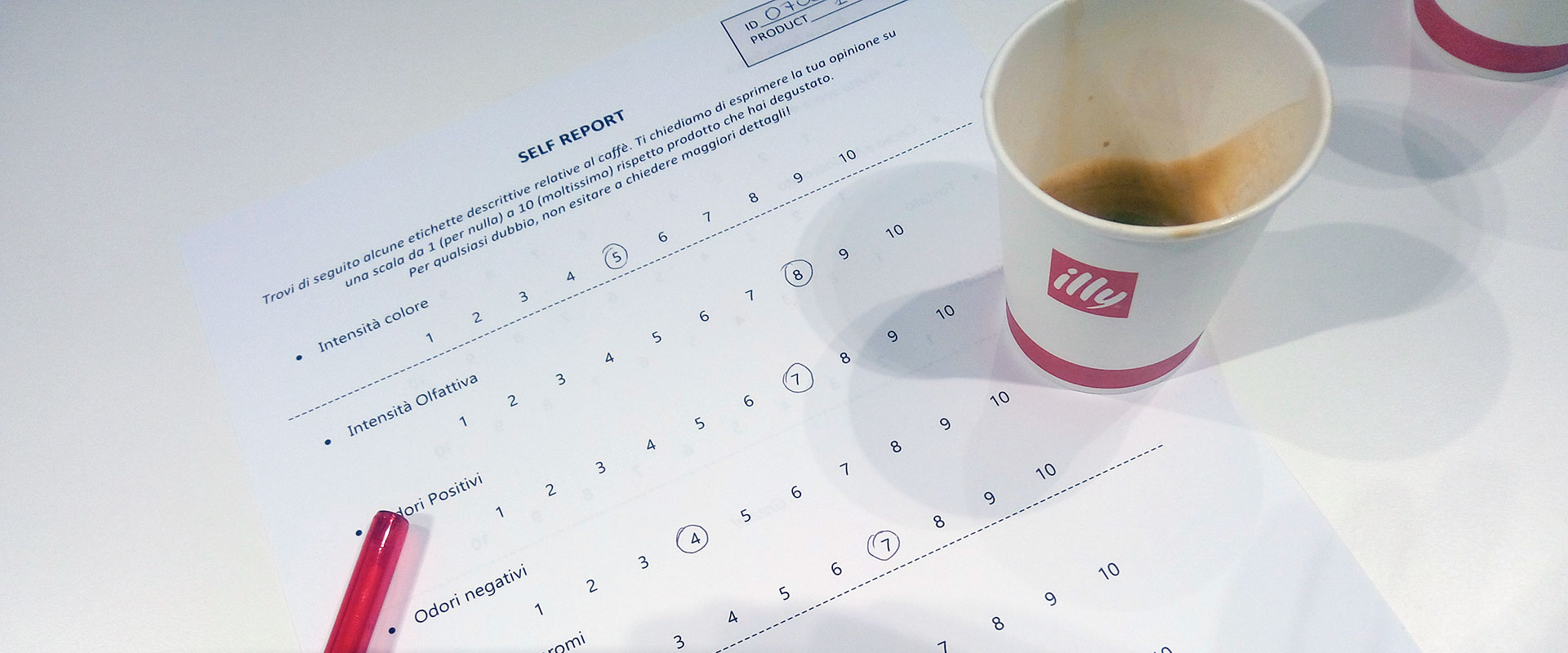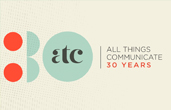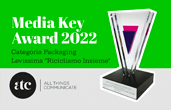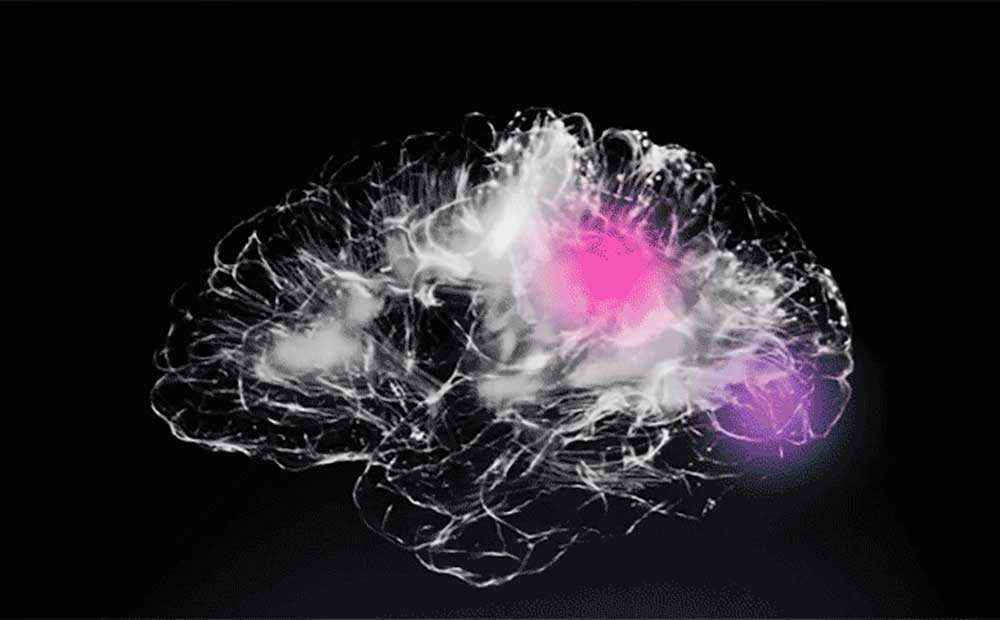The second room has crisp-blue painted walls fading into soft pink. Quoting pop aesthetics, the place clashes with the sober interiors of room 1, duly inspired to nordic design in its display of wooden elements, delicate textiles and rare apartment plants.
Visitors are invited to touch objects and feel materials, move around or simply sit down, making themselves comfortable. They are all wearing a coloured band on their wrist. As they enjoy their time in the room, the band measures what’s happening INSIDE of them: variations in their heart rate, pulse, skin temperature and more.
Part of the project “A Space for Being: Exploring Design’s Impact On Our Biology”, on show at Milan Design Week 2019, the wearable band, together with the information visualisation algorithm developed for it, is Google’s recent venture in neuroaesthetics, and only one of the dozens initiatives carried out by companies and researchers, which fall into the so-called neuromarketing: a new field of study which bridges the gap between neurosciences and marketing, by applying medical measurement techniques to the study of consumer behaviour.
Mountain View’s tech titan isn’t new to neuromarketing: in 2008, the company summoned a research to assess the emotional impact of YouTube overlay ads on users, to pacify doubtful advertisers who were fretting about the potentiality of the ad format.
The topic is not just a Silicon Valley fad: notable was the experiment held by Illy at Seeds & Chips-Tuttofood fair in Milan, earlier this month, where participants were invited to a coffee tasting session, and to get an EEG in the meanwhile. Big market research companies all over the world, like Nielsen, are equipping themselves with neuromarketing departments.
So, neuromarketing looks quite cool today and we think it is going to become even more so in the next future.
It promises to make wonders: namely, to truly understand consumer behaviour.
 Illy’s neuromarketing experiment at Seeds and Chips 2019
Illy’s neuromarketing experiment at Seeds and Chips 2019Cerebral Truths
Few things are as mysterious and unknown as the human brain. Neuro-scientists and researchers struggle to find answers to the complexities which govern human cognitive processes.
But although the chief organ of our body is still too far from being fully deciphered, there is one thing that seems ascertained: emotions play a role in our decisional processes and a central one.
Last April, we were listening to professor Vincenzo Russo, researcher and doctor in psychology at IULM Behaviour and Brain Lab. Speaking at 2019 Marketing Festival, Russo explained how the findings from several studies are set to popularise neuromarketing as a consumer research tool in its own.
“The majority of our purchase decisions happens below our conscious level”
At the heart of the discipline is a belief that classical market research tools, like questionnaires and focus groups, can’t provide a fully accurate account of the motivations behind people’s behaviour. Often biased or inaccurate, these techniques leave room to respondents’ not deliberate distortions.
Instead, to gauge the true potential of a product, a marketing campaign, a TV commercial, or an ecommerce user interface, you need to consider people’s emotions. “The majority of our purchase decisions happens below our conscious level”, says Russo, quoting the work of many a neuroscientist.
- biometric and neural data are collected real time, leaving no chance to memory to reinterpret, and thus to err, in retrospect
- these data are believed to truly account for a person’s emotions, which, modern studies agree, are central to the neural processes that are connected with human decision making.
Mindful campaigns
During the classic product marketing age, marketers tended to focus their time and energy on the components of their offering that would appeal to a rational buyer. Emotional marketing changes the perspective and puts the person at the centre.
We are now used to the concept of user-centricity, in design and communication.
What is really driving neuromarketing today is the discipline’s potential to accurately and precisely measure the outcome of these initiatives.
 Left: The “Pepsi Challenge” was one of the first cases in advertising history pioneering the use of neurosciences to understand consumers’ behaviour. (Photo Credits: Tuesday Temptation).Right: example of neuromarketing research applied to consumer reading habits on a product pack
Left: The “Pepsi Challenge” was one of the first cases in advertising history pioneering the use of neurosciences to understand consumers’ behaviour. (Photo Credits: Tuesday Temptation).Right: example of neuromarketing research applied to consumer reading habits on a product packThe notorious “Pepsi Challenge”,which declared the alleged preference of Pepsi over Coke after scanning the brains of 40 blind testers, is perhaps one of the most celebrated cases in the history of advertising, that proved neuromarketing commercially interesting.
But the list continues and embraces Campbell’s attempts at figuring out a better way to sell their soup, as well as Nokia’s experiment which proved the unpopularity of their cell’s signature ringtone, and lots more.
If neuromarketing is to be the next great thing in business strategy and advertising, is hard to tell with certainty.
But professor Vincenzo Russo and many others are convinced of one thing: that if we make our products communicate better to people’s emotions, they will make the decisions that we are all after.
“Emotions play a key role in people’s behaviour and are deeply connected to our purchase decisions”.
References:
Emozioni on demand, IULM Behavior and Brain lab
A. Damasio, (1994) L’Errore di Cartesio
Wilkins et al., 2014 – Human Behavior and Cognitive Neuroscience 4
The Pepsi Challenge, on Wikipedia







